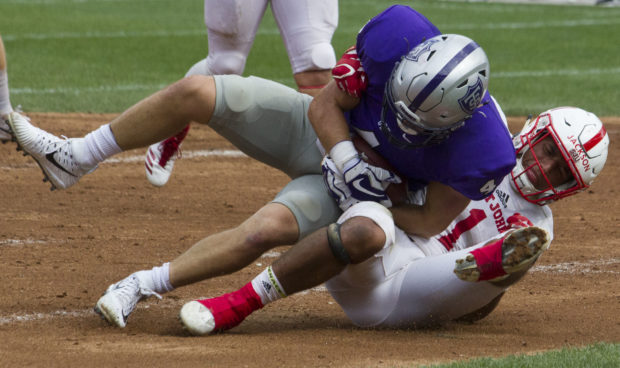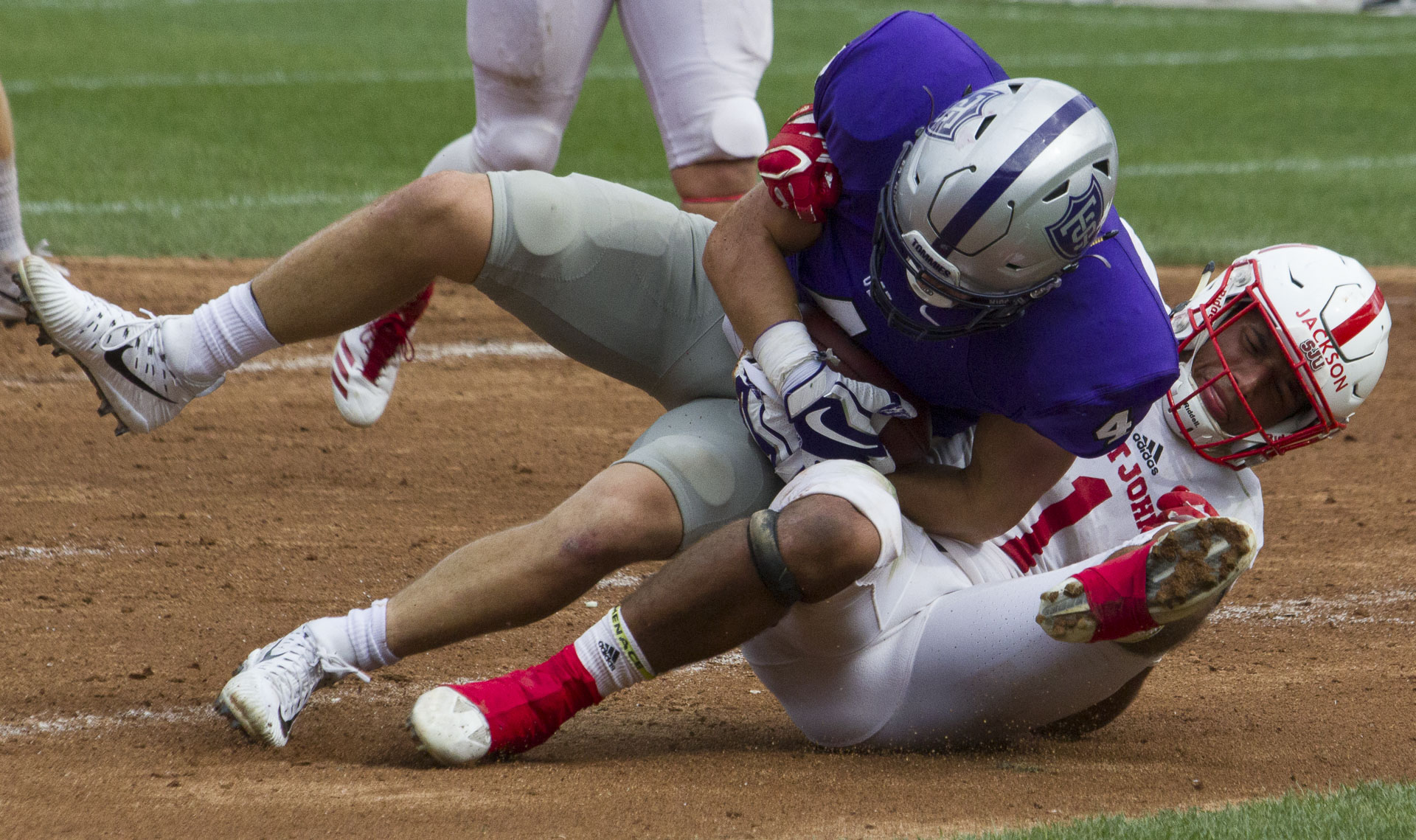The future of tackle football is in question due to the growing concern over a degenerative brain disorder that could be linked to concussions.
Chronic Traumatic Encephalopathy is a degenerative brain disorder that causes a protein called Tau to form in the brain and slowly kill brain cells, according to the Concussion Legacy Foundation.
The disorder has been a controversial topic because of differing views on the danger of the game ever since Bennet Omalu, a neuropathologist from Nigeria, first discovered CTE in former Pittsburgh Steelers lineman Mike Webster in 2002.
Ann McKee, a leading CTE researcher at Boston University, examined the brains of 111 deceased NFL players. Of the 111 players, 110 had CTE.
Her findings, published in the Journal of the American Medical Association, were a shock to the football world. Many people spoke out against the study, including former Minnesota Viking and Cretin-Derham Hall graduate Matt Birk.
Birk tweeted out his skepticism of the report in July: “What about the 15,000 or so deceased former NFL players who lived full lives and didn’t have CTE?”
What about the 15,000 or so deceased former NFL players who lived full lives and didn’t have CTE? https://t.co/ekDoStSif1
— Matt Birk (@BirkMatt) July 26, 2017
Birk, who has pledged to donate his brain to science when he dies, is part of the group of players and doctors who believe more research is needed before conclusions on the danger of the game can be made.
St. Thomas athletic trainer Jim Rakow is part of this group.
“I think, in general, we are a reactive society. We are a sensationalist society,” Rakow said. “We tend to overreact.
“I’m not saying CTE isn’t an important topic to look at, but I think we’ve made some jumps that we cannot correlate,” Rakow said, alluding to the hysteria of negativity surrounding football.
St. Thomas Biology Department Chair Alex Illig, who has researched CTE, believes there is a strong correlation between the disorder and football.
“It’s not fair to say football is worse than any other sport when doing this, but to say ‘no, no, no, everything’s fine, let’s study it for 10 years’ means you’re exposing athletes for 10 more years to something you know may have a role in something very, very bad.”
McKee warned in an interview with the New York Times that her study contained “incredible selection bias.” The players she worked on had all donated their brains to science precisely because they showed symptoms of CTE.
However, the fact that 110 players had CTE suggests a correlation between football and the disorder.
NFL officials said in March that there’s certainly a link between the two, a change from its stance since the disease was discovered. As a result, the NFL has given $30 million to the National Institutes of Health to study the disorder and instituted numerous rule changes to protect players.
The NCAA has taken precautions of its own to protect players. Two-a-day practices were eliminated from every level of NCAA football in April. If a team chooses to practice twice in a day, one practice must be non-contact and without helmets, shoulder pads or conditioning activities.
St. Thomas sophomore wide receiver Vinny Pallini, who has had a concussion from playing football, recognizes the danger of the sport.

“I know that every time I step on the field I could get injured,” Pallini said. “It’s just part of the game, but knowing the risks and doing all the preparation I can to prevent them is key.”
Former Tommie wide receiver Ben Boone, currently a junior, stopped his collegiate football career after receiving his seventh concussion.
“It got to a point where I had so many concussions it just wasn’t worth playing anymore,” Boone said. “I knew my health was on the line, and that’s why I had to stop playing.”
Boone, now two years removed from football, is still feeling the effects.
“I still get headaches to this day. I had a really bad migraine earlier today actually,” he said. “I’m going to meet with a CTE doctor in early November.”
Evidence for CTE in football is continuing to develop, and there are plenty of opinions on how to handle the issue. Experts disagree on where the future of football is headed, but only time will tell.
“Football has been villainized by the whole concussion thing,” Rakow said. “It’s important, yes…but we need to take our time and just not react to a story that may have another angle.”
“You only get one brain,” Illig said, “and to my mind it makes sense to take these kinds of findings seriously.”
Brady Halbmaier can be reached at halb2084@stthomas.edu.



